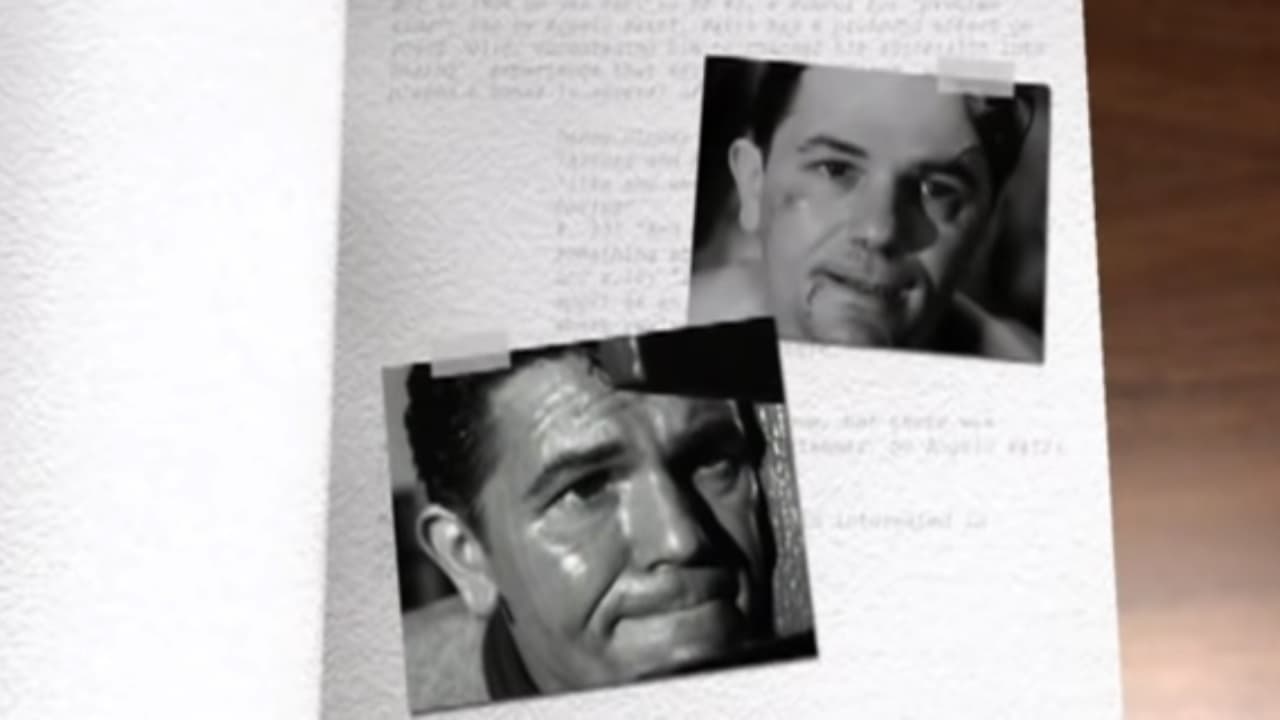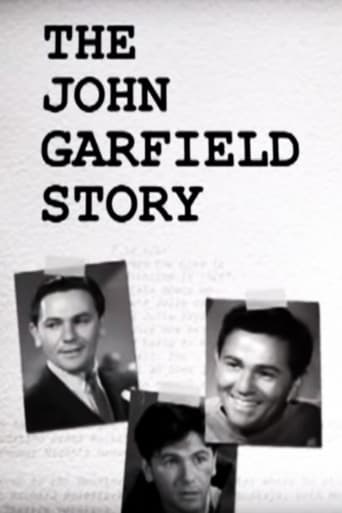

My impression of John Garfield had always been that of a 1940s actor who played tough guy roles, and who grew up in a rough urban neighborhood. I tended to think of him mostly in the role of a boxer, rather short and stocky (his stated height is exactly the same as that of Tom Cruise). But since Garfield was before my time, my image of him was vague.This one-hour bio put the man's life in sharper focus for me. I didn't know he played a variety of character types or that he studied method acting and spent much of his career affiliated with NYC's theater company. These factual details helped clarify my perception, though they also reinforced my image of him as a tough guy.The bio includes interviews with current film VIPs, and is narrated by his daughter. Not unexpectedly these people gush with flowery compliments and adulation for Garfield. Has there ever been a film bio that featured interviewers critical of the deceased? In "The John Garfield Story" the interview responses thus seem overly eulogistic. However much the anticommunist HUAC may have wrongly hounded Garfield, the Committee didn't "kill" Garfield as one interviewer says flat out.Even so, though the film may be a standard celebrity bio, it is still an interesting story, because Garfield himself was an interesting man and a fine actor.
... View MoreJOHN GARFIELD was well used at Warner Bros. where he became a contract player in the late '30s, beginning with his much ballyhooed first film, FOUR DAUGHTERS ('38), sharing the screen with some of Warner's best contract players and stealing many a scene as the tough guy with a heart of gold.But to listen to this documentary, his Warner contract allowed him to do too many prison films. Actually, his street smart, chip-on-the-shoulder type of personality was what the public expected to see rather than having him stretch to be someone who could do a variety of other roles.After all, those tough guy prison films were what kept him so popular with the movie-going public during all those years at Warners. When he did "stretch," the accents proved too much for him to handle (as in TORTILLA FLAT and JUAREZ) and costume films were not his forte. The Brooklyn in his voice was always just beneath the surface, as was his tough guy attitude. It was the dangerous element in his personality that women loved. Aside from the prison dramas, he got to do a number of respectable war films (DESTINATION TOKYO, PRIDE OF THE MARINES) and films of social significance like GENTLEMAN'S AGREEMENT.Garfield's biggest disappointment was not getting a chance to do Clifford Odet's GOLDEN BOY on public and repeating that performance on film. However, he made up for it ten years later by starring in a B'way version, just a little too ripe for the role at that point. We get to see a glimpse of a TV scene from the play opposite Kim Stanley which at least gives an indication of how good his performance in that role probably was.As for the celebrities who talk about Garfield, that's the weakest part of the documentary. There's nothing particularly illuminating in any of the comments by Lee Grant, Joanne Woodward, Richard Dreyfuss, Norman Lloyd or any of the others who offer little insight into what made the man tick aside from his surface toughness as a result of a tough childhood in Brooklyn. Along the way he had help from someone at a school for troubled kids and developed an interest in the theater, soon a favorite with the Group Theater.Garfield deserves a better bio than this, but it does offer some generous film clips from a few of his best films and should please fans who want to know more about his emergence as a star.
... View MoreThis is an adoring, mythological biography of John Garfield that offers little insight into the real man, his psychological complexities or his turbulent personal and political relationships that led to his downfall and his death. For example, one of its standard boilerplate story lines is that Warner's misused Garfield. This same tired story-line is used over and over in biographies of Bogart, Cagney, Davis, Robinson, Muni, Flynn, and dozen of other actors who worked for Warners. There is nothing original or insightful into these old half-truths.The fact is that actors are not necessarily the best judge of the materials they should be in. The fact is that the Warners did necessarily misuse its actors. Proof that Warners was not out of touch is that it managed to make a wealth of memorable classic films in the 1930's and 1940's, starring these so-called misused actors. If one accepts the story line, then one must presume that the studio made these films by accident.Often the point of using this trite story line in a biography is to make the actor a proletarian victim of the more powerful capitalistic forces in the studio and therefore, someone who does not have control over his destiny, or his fate, or who is not responsible for the decisions that he or she makes. That would seem to be the case in this simplified love poem to Julie Garfield.In this documentary, one does not get the real story of why Garfield lost his prize role in Golden Boy to Luther Alder, but instead a sugar coated one. The real story is much more interesting and pivotal in the career of Garfield, and had it been told would have made an much more interesting and meaningful biography. It would, however, have exposed much of what was covered-up in this documentary, and have undermined the final verdict of it, namely, John Garfield was a victim.The outright deceits of this documentary are too numerous to comment upon here, especially those of James Cromwell, who appears as a snotty self-appointed expert on a subject that is obviously miles over his head, nor does it bring up the fact that John Garfield perjured himself when he testified before the House Committee, and that is why he found himself in the deep muddy. His egregious perjuries had little to do with his alleged refusal to name names. Of course, these factoids would undermine the mythologizing that this documentary sets out to achieve.
... View MoreA newspaper reviewer of Garfield's performance in his first movie, "Four Daughters," wrote that it was unclear whether it was the script or the performance that was so great, but the that the critic opted for the performance.That's the way it was with Garfield: so natural and convincing was his rendering that the viewer completely forgot that it was a "performance," rather a real character being observed and experienced.So successful were Garfield's "bad-boy" roles, that Warner Bros. kept him stuck there, to John's chagrin. On rare occasions he proved he could play other parts brilliantly, and the total body of his work is remarkable--particularly in so short at time. To have died before the age of 40 was a serious loss to the profession, yet his legacy paved the way for the likes of Brando, DiNero, Pacino and Hoffman.This original Turner Classic Movie production does justice to Garfield's work, and includes such thespian notables as Dreyfus, Woodward, Glover, and Cronyn paying tribute to one of their "heros."
... View More